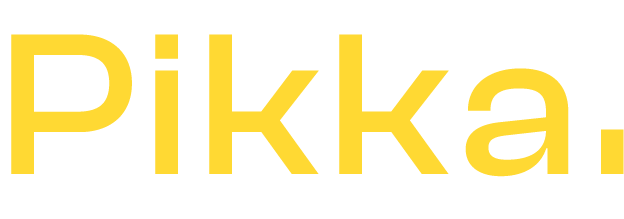What choice should be made between Open Source software and SaaS software?
This question very often arises before starting an e-commerce project. Besides, this may be your case now reading this article. Depending on the time and human resources that you can devote to the project, you will have to make a choice between these two techniques.
Among the best-known Open Source e-commerce e-commerce software are WordPress , Magento, Prestashop and Joomla . On the other hand, among the SaaS software, we can of course cite the Shopify solution or the French solutions Oxatis or WiziShop.
In any case, both types of software have advantages and disadvantages, and we will describe them to you in this article.
If you want advice on choosing the right e-commerce solution, you can also read our complementary article: 8 points to check to choose the best e-commerce solution .
The differences between open source and SaaS
Before seeing the notable differences between the two, let's go back to their definitions.
 Open Source means that the source code of the software is accessible to everyone. Developers and users all over the world can make their changes to improve the software and freely share it with others. With Open Source, the code is transparent to the entire community. Many open source software are used in the field of e-commerce, including WordPress, Magento and WooCommerce.
Open Source means that the source code of the software is accessible to everyone. Developers and users all over the world can make their changes to improve the software and freely share it with others. With Open Source, the code is transparent to the entire community. Many open source software are used in the field of e-commerce, including WordPress, Magento and WooCommerce.
Software As A Service means that the software is provided by a service provider via the Internet, generally in the form of a monthly or annual subscription. Unlike Open Source software, the code is managed by the service provider and the user then becomes a simple user.
The benefits of open source software
Very low software costs
Most open source e-commerce software is free and very accessible. For some businesses, SaaS software licensing costs can be a significant drag. Additionally, companies can save on maintenance costs due to the large community of developers who contribute to the development of the open source software.

Innovation, intrinsic to the open source model
With open source software, innovation is strongly encouraged since it is a whole community of developers and users who can contribute their skills in order to constantly improve the software. The collective is a key element in the innovation process.
Personalization
If the company has the technical skills in-house, a team of developers for example and a product team, the open source software can be customized according to the company's activity and its specific needs. The source code can be easily modified and adapted to create a turnkey solution.
WooCommerce, which is the most popular e-commerce extension for WordPress powers 7% (1) of all merchant sites on the Internet.
The advantages of software in SaaS mode
Lower entry costs
SaaS e-commerce allows companies to start selling online without having to invest in the infrastructure, development and maintenance of a self-hosted e-commerce platform. These avoided costs allow them to focus primarily on their core business rather than the technical details of their website.
Scalability and flexibility
SaaS-based e-commerce platforms are designed to be scalable and flexible, allowing companies to easily adapt to changes in their business. Features such as inventory management, order management, delivery management, and payment management can be easily added or removed based on business needs.
Accessibility
The great strength of SaaS software lies in their accessibility, regardless of the user's skills. Thus, e-commerce solutions in SaaS mode are generally designed to be easily administered by users from any device: desktop computer, tablet or even from their smartphone.
Security
SaaS-based e-commerce platforms are designed to be highly secure, providing businesses with protection against security attacks and fraud. SaaS-based e-commerce solutions often use a combination of security methods such as SSL encryption, credit card validation, and delivery address verification.
Customer support available
The technical support part is important when using SaaS software. If this software is within the reach of any user, they do not necessarily have the technical skills to be able to intervene in the event of problems.
Thus, the 24/7 support of certain platforms can be a considerable asset when the Open Source community may take some time to respond to a specific point.
Shopify, the star SaaS software
Since its creation in 2006, Shopify has helped millions of e-merchants generate sales by offering them a very complete online solution. This is the #1 advantage of SaaS software as we mentioned earlier.
With monthly pricing and clear offers (Basic at €27/month, Shopify at €79/month and Advanced at €289/month), Shopify facilitates the online activity of e-merchants who then become simple users of the platform.
Shopify manages all the features needed to manage a merchant website: marketing, inventory and order management, payment module and shipping management, report generation and store optimization for SEO , data and platform security.
In 2023, Shopify represents 10% (2) of total e-commerce in the United States. More than 1.7 million (3) merchants use Shopify as their leading e-commerce platform.
You now know the difference between open source e-commerce software and e-commerce software in SaaS mode. The choice of one over the other is made according to several factors such as the time available internally, the human and technical resources within your company or the budget you wish to allocate to the e-commerce project.
With the advent of SaaS software, Shopify has quickly become essential for many e-commerce professionals. The platform offers a turnkey product to launch your merchant site and generate sales quickly.
List of main SaaS e-commerce solutions
Here is a short, non-exhaustive list of the main e-commerce solutions in SaaS, available on the French market and which have development potential.
List of the main Open Source e-commerce solutions
As for SaaS, here is a small list of open source e-commerce solutions that are quite present on the French market
- PrestaShop
- Magento
- Proximity
- Wordpress / WooCommerce
- Silius
Sources of the article
(1) eCommerce Usage Distribution in the Top 1 Million Sites , BuiltWith, 2021.
(2) Shopify Homepage , Shopify, 2023.
(3) Shopify: statistics and key figures , Sales Hacking, 2023.







